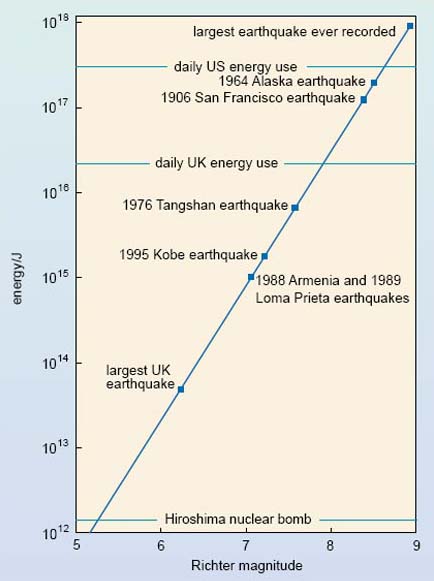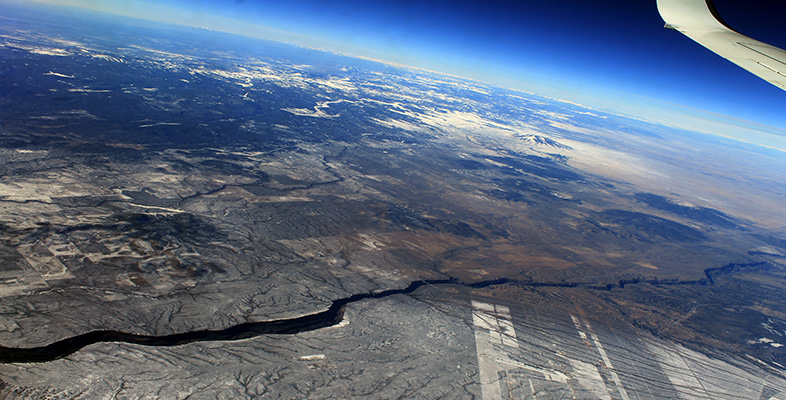4.3 Seismic energy
It is also possible to relate magnitude to the seismic energy released by an earthquake. An increase of one unit on the Richter scale represents an increase of about 40 times in the amount of seismic energy released.
Question 2
What increase in (a) the maximum ground motion, and (b) the energy released is involved between an earthquake that measures 6.1 on the Richter scale and one that measures 8.1?
Answer
There is an increase of (8.1-6.1) = 2 units on the Richter scale, which is an increase of:
(a) 102 = 10 × 10 = 100 times in ground motion;
(b) 40 × 40 = 1 600 times in energy released.
Earthquakes with magnitudes of 8 and greater occur rarely, but when they occur they can lead to almost total devastation over a large area (Table 3). Smaller earthquakes occur more frequently, but their combined energy release is small compared with that from one great earthquake; it would take about 3 million earthquakes of magnitude 4 to release as much seismic energy as a single magnitude 8 earthquake. Earthquakes with the highest Richter magnitudes are not necessarily the most devastating, nor do they necessarily cause the greatest loss of life. The damage depends on the depth; as mentioned previously, shallow earthquakes are more destructive than deeper ones. It also depends on other factors such as population density, the rock types, soil conditions and local building standards.
| Richter magnitude | Average number per year | Radius of region of strong ground shaking/km | Effects of shallow earthquake |
|---|---|---|---|
| >8.0 | 80-160 | almost total destruction | |
| 7.0-7.9 | 15 | 50-120 | serious/great damage |
| 6.0-6.9 | 140 | 20-80 | considerable damage |
| 5.0-5.9 | 900 | 5-30 | slight damage |
| 4.0-4.9 | 8 000 | 0-15 | felt by many |
Finally in this section, it is interesting to compare the energy produced by earthquakes with other energy sources. The amount of energy released by the Hiroshima nuclear bomb was about 1012 J, whereas one magnitude 8.9 earthquake released about 1018 J of seismic energy (Figure 9). This is a million times more energy (i.e. a factor of 106) than the Hiroshima bomb. The amount of energy used every day in the UK is somewhat more than 1016 J (Figure 9), and this is more than 100 times greater than the seismic energy released by the largest UK earthquake. However, the seismic energy (responsible for ground motion and the resulting damage) is only a few per cent of the total earthquake energy. The rest is involved in breaking and crushing rocks around the fault, moving the adjoining blocks of the Earth, and heating the rocks.

